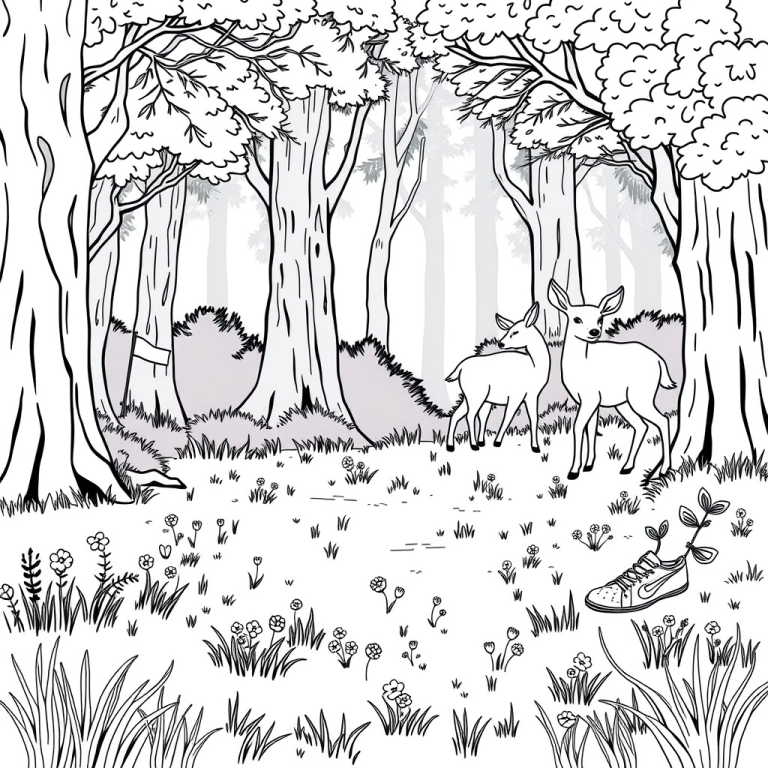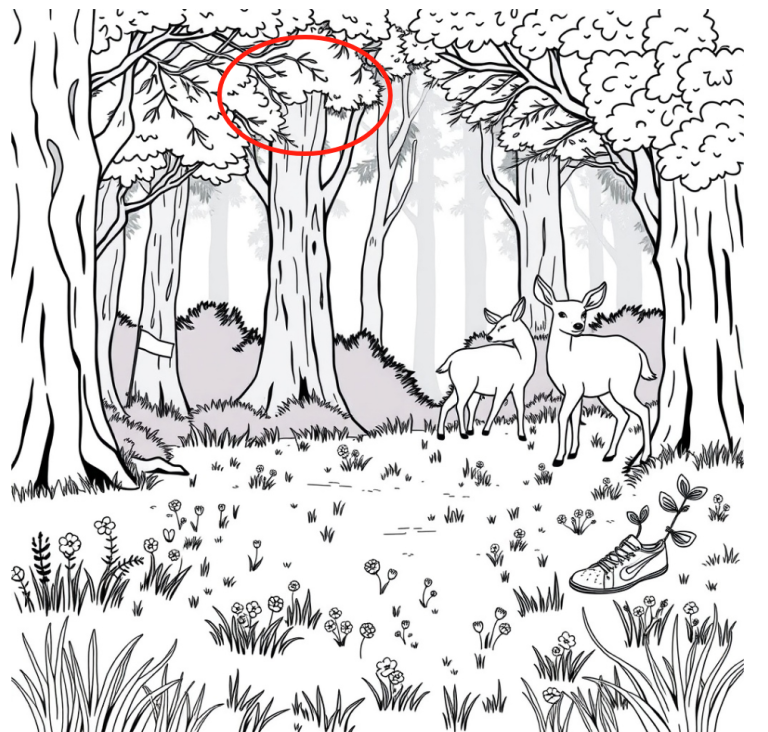Wilderness Encounter: Deer, Wildflowers, and the Tale of the Lost Sneaker
A Serene Forest Clearing with a Surprising Twist
Imagine stepping into a sun-dappled glade, where towering trees arch overhead and a carpet of wildflowers stretches beneath your feet. In the heart of this tranquil woodland, two graceful deer pause at the edge of a meadow, their ears perked to every whisper of wind. Yet, amid this portrait of untouched nature, one curious detail stands out—a lone sneaker, half-buried among the clover and grass. What’s it doing here? This unexpected meeting of wildlife and human artifact offers a unique window into our relationship with the natural world.

The Gentle Presence of Deer in Woodland Habitats
Deer have long captivated our imagination with their elegant form and watchful gaze. In temperate forests, whitetails and red deer play vital ecological roles:
- Vegetation Control:By browsing on undergrowth, deer help shape the understory, promoting a balance of shrubs, saplings, and groundcover.
- Seed Dispersal:As deer roam, seeds hitch rides on their fur or pass through their digestive tract, sowing new plants along forest corridors.
- Predator–Prey Dynamics:Serving as prey for wolves, cougars, and bears, deer ensure healthy predator populations, preventing these carnivores from declining or straying into human settlements.
Spotting deer in a clearing feels like a privileged invitation to observe the rhythms of life that pulse beneath the canopy.
Wildflowers and Groundcover: Nature’s Living Quilt
Before your eyes drift to the deer or the misplaced sneaker, take in the tapestry of blooms beneath your boots. Woodland groundcover can include:
- Trilliums and Violets:Early spring’s heralds, these blooms carpet the forest floor before deciduous trees fully leaf out.
- Ferns and Grasses:Their feathery fronds and slender blades form protective layers that prevent soil erosion and retain moisture.
- Clover and Clover-Like Herbs:Clover’s trifoliate leaves and tiny blossoms enrich the soil with nitrogen, fostering fertility for neighboring flora.
This intricate network of plants supports insects, birds, and mammals—each species weaving its own thread into the ecosystem’s grand design.

Human Footprints: The Story of the Abandoned Sneaker
Now, let’s zero in on that sneaker, half-ensnared by sprouting clover. It’s a stark reminder that human presence extends far beyond city limits:
- Litter and Pollution:Even a single sneaker can leach chemicals into the soil and water, disrupting microbial communities essential for plant growth.
- Wildlife Hazards:Animals may chew on rubber or lace fibers, risking digestive blockages or poisoning if the shoe contains toxic dyes.
- Visual Intrusion:The sneaker undercuts the forest’s visual harmony, jolting us from reverie to reality—and urging reflection on our habits.
Every discarded item tells a story. This lone sneaker speaks of a hiker who paused, a child who lost a shoe, or a traveler who underestimated the wilderness’s call to care.
Bridging Two Worlds: How to Explore Responsibly
Encountering human-made objects in nature needn’t be purely negative. Instead, it can spark positive change:
- “Pack In, Pack Out” Ethics:Whatever you bring to the forest—water bottles, snack wrappers, extra shoes—should leave with you. It’s a way to honor the habitat and its inhabitants.
- Citizen Cleanup Events:Joining or organizing local “Adopt-a-Trail” days helps remove litter like the sneaker in our scene and nurtures community bonds.
- Mindful Photography:When you capture wildlife moments, share images responsibly. Encourage viewers to appreciate, not disturb, the subjects.
By blending curiosity with commitment, we can ensure that our footprints enrich rather than erode these living landscapes.

Photography Tips: Capturing Wildlife and Unexpected Finds
If you’re itching to photograph a similar scene, here are a few tricks:
- Low Perspective:Crouch or lie down to frame the deer and groundcover at eye level—this angle emphasizes intimacy with the subject.
- Center of Interest:Place your main subject (the deer or the sneaker) near one of the image’s thirds using the rule-of-thirds grid, creating a balanced composition.
- Natural Light:Shoot during golden hours—early morning or late afternoon—when soft sunlight filters through the trees, casting gentle shadows and warm highlights.
- Stealth and Patience:Move slowly and use a telephoto lens (200mm or more) to avoid startling deer. Silence shutter clicks and minimize abrupt motions.
- Focus Techniques:Use continuous autofocus for moving subjects or manual focus for stationary elements like the sneaker, ensuring razor-sharp detail.
With these strategies, you’ll transform a simple woodland ramble into a photo expedition filled with discovery.

Ecological Lessons Embedded in a Single Frame
Our snapshot of deer at the forest’s edge, punctuated by a wayward sneaker, carries layered insights:
- Interconnectedness:Every organism—from towering oaks to tiny violets—plays a role in sustaining the whole. The sneaker, though out of place, reminds us that we, too, belong in this web.
- Temporal Shifts:Forests evolve slowly, yet a sudden human artifact can accelerate changes—both negative (pollution) and positive (cleanup awareness).
- Value of Observation:Slowing down to notice details—a digitigrade hoof print, a hidden shoe, a bee pollinating a clover bloom—trains our senses to appreciate the subtle dramas unfolding all around.
When we learn to read these ecological narratives, we become better stewards of the lands that sustain us.
Creating Your Own Forest-Friendly Adventures
Dreaming of your own woodland encounter? Here’s how to plan a trip that celebrates nature and minimizes impact:
- Research Trails:Choose routes rated for low-impact usage—less crowded paths where wildlife thrives and litter is minimal.
- Gear Checklist:Sturdy boots, reusable water bottles, biodegradable trail soap, and a small trash bag should be staples in your daypack.
- Timing Matters:Visit at dawn or dusk when deer are most active—plus you’ll enjoy cooler temperatures and softer light.
- Leave No Trace Principles:Camp, hike, and picnic with a leave-no-trace mindset—avoid trampling vegetation, stick to designated paths, and pack out everything you bring in.
- Engage Locals:Connect with park rangers or regional naturalist groups for guided walks—they share hidden spots, historical legends, and conservation insights that enrich your experience.
Armed with these tips, every forest adventure can deepen your bond with the natural world and leave behind nothing but gratitude.

Conclusion: A Call to Mindful Wonder
The enchanting scene of two deer stepping cautiously into a wildflower meadow—framed by whispering pines and a single abandoned sneaker—beckons us to pause, observe, and act. It’s a reminder that our presence in these delicate ecosystems carries weight, whether we’re the silent observer capturing a photograph or the visitor who unwittingly leaves behind an artifact. By celebrating the forest’s wonders, practicing responsible outdoor ethics, and responding to nature’s subtle cues, we transform casual strolls into meaningful journeys. So next time you wander under the canopy, listen for rustling leaves, watch for gentle eyes peering from the underbrush, and carry home every trace of your passage—ensuring the forest remains a realm of serenity, discovery, and shared respect for generations to come.